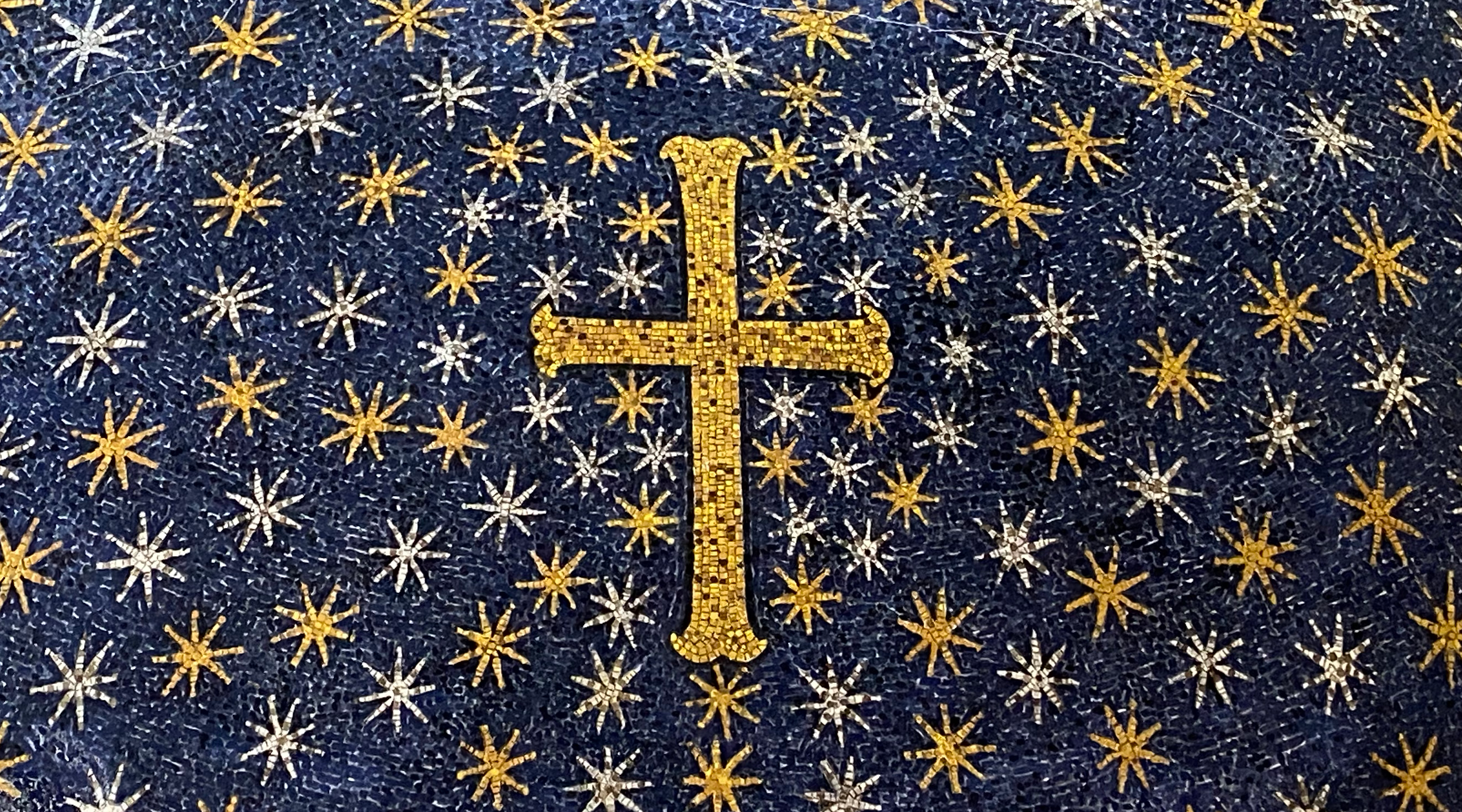After a long break because of COVID, the Center for Early Medieval Studies finally took off on a study trip to Ravenna. It wasn’t the Center’s first trip to Ravenna, but it was the first experience with this city for most of the participants. After spending the night on the train from Vienna, we arrived at the railway station in Brescia, where we were supposed to change trains for Ravenna. But, an adventure already awaited us – there weren’t enough train tickets left for the whole group, so we had to find another way to get to Ravenna. Finally, after three transfers and a little longer trip than originally expected, we all met in a small bar next to the Ravenna Station for an aperitif.

The first sight we visited was the so-called Mausoleum of Galla Placidia. The beautiful first impression of the mosaics was a little spoiled by COVID, because we only had five minutes inside, and our blandishments of the warden were not successful. The Basilica of San Vitale then awaited us. There, fortunately, we spent as much time as we wanted and had the opportunity to look carefully at the mosaics in the apse and discuss the modern frescoes in the dome.
Our second day began in the Arian Baptistery, known for its ceiling mosaic depicting the baptism of
Christ and the two processions of the apostles, led by St. Peter and St. Paul. Our next stop was the
Archiepiscopal Museum, where we examined Maximilian's throne and the archbishop's chapel. After
lunch, we continued to study the ritual of baptism in the Baptistery of the Orthodox. We spent a lot
of time in the baptistery, because this time the warden was very nice and let us in again, even
though the original designated time was only five minutes. And fortunately, no one inside disturbed
us, and we could talk and listen normally. The experience at Sant’Apollinare Nuovo – our next stop –
unfortunately wasn’t the same.
It turns out that you are not allowed to talk in the basilica if you
do not have a special guide card, which complicated the process for us a lot, but the bad feeling
from the strange rules was quickly improved by the beautiful mosaics of the main nave, which, by the
way, is one of two surviving examples of initial main nave decoration. The last monument we managed
to visit was the Basilica of Sant’Apollinare in Classe, which initially housed the tomb of St.
Apollinare – the first Bishop of Ravenna. Usually during excursions to Ravenna, students go there
and back on foot, but, due to lack of time, we went there by train,  and then took a
walk back. The
end of this wonderful and eventful day was a traditional Italian dinner right on the main square.
and then took a
walk back. The
end of this wonderful and eventful day was a traditional Italian dinner right on the main square.
Our last day was spent in Brescia. We met Annalisa at the station, who took us on a tour of the town, and then we visited the Archaeological Museum, where we saw the Cross of Desiderius, the Diptych of the Barbizon and the Diptych of Murano. At the museum, we said goodbye to part of the group and the rest went to Venice, where we had a three-hour layover, during which we had our last Italian aperitif. Despite some COVID complications, I think this excursion was a beautiful start to the new travel season and I hope we won’t experience such long breaks from travel again.
Margarita Khakhanova




















